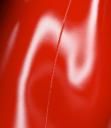Shader mixer and Uber shader
I had a question regarding enhancing the Uber shader using the shader mixer.
I do (fairly SFW) renders of latex clothing quite often, and I've been refining a latex shader build with the Uber shader for a long time. It started life as a material on a product, but it's now exolved. An important aspect of this is that it's not perfectly reflective. It has a kind of smeary shine, which is achieved using a tileable "Top Coat Roughness" map I created, as shown in the attached image.
I am very happy with the results it produces apart from one thing. When I have a highlight on a seam, the smear changes (as you would expect), and it's ofgen a very obvious discontinuity that must be fixed in postwork. For a long time, I've wondered if I could somehow fix this with a procedurally generated map created by the shader mixer and then (please forgive the terminotogy) apply that in the 3D space rather than the UV space, but because there is no documentation for that (which I can find), I didn't bother trying. Then I found this thread.
https://www.daz3d.com/forums/discussion/242936/an-iray-shader-mixer-cookbook/p1
In particular, the "In Space, No One Can See Your Seams -- Fun with Coordinate Systems" seems to be a way to solve this problem. It looks like I could use that to replace the roughness map, but what I'm less clear on is how I could use that within the Uber shader. Now, I assume that the Uber shader is just a really complicated set of bricks, so it it a case of finding the brick that controls top coat roughness and plugging in ther set of bricks in that post?
I'm not after exact instructions on how to do it, I'm really just wondering if the idea is feasible.
Thanks :)



